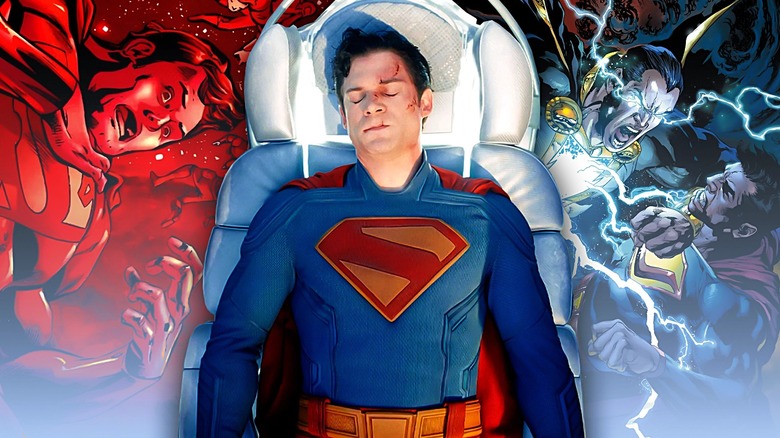
James Gunn's "Superman" is, above all else, an unbelievably refreshing film. It breathed new life not only into the character (with enormous assistance from a perfectly cast David Corenswet), but into the DC Comics brand and the superhero subgenre at large.
One of the most distinct departures Gunn took with his narrative was its exploration of Superman's humanity. It's a deceptively difficult task for a character with godlike abilities, especially after those abilities were emphasized in Zack Snyder's
films, which inarguably played a major role in shaping the contemporary perception of what makes Superman special.
To many, he's an extraterrestrial deity whose only vulnerability is Kryptonite, a glowing rock as alien to us as he is. This is far from true -- and, as Gunn showcases to a surprisingly exhaustive extent in his film, the Man of Steel is vulnerable to many of the same things as the people he protects.
Read more: Every Live-Action Superman Costume Ranked (Including David Corenswet)
Lead

Considering all of Superman's weaknesses that affect him physically, lead is undoubtedly the least effective or dangerous. It does not dampen his powers or poison him on any level (which, in fact, means that lead is way less dangerous for Superman than it is for the average human being), but simply works as a natural barrier for his super vision.
As casual fans probably know, Superman has X-ray vision, a byproduct of his ability to see the full electromagnetic spectrum thanks to the unique reaction between yellow sun radiation and his Kryptonian physiology. Because this power is (loosely) based in actual science, early "Superman" writers decided that it was only logical that he couldn't see through lead, as the material is used in the real world to block X-rays. Since the '70s, doctors have provided patients with lead aprons when they undergo an X-ray examination in an effort to protect them from potential radiation.
The most notable exploiter of this weakness is, somewhat surprisingly, Batman. In the comics, the Dark Knight has lined the Batcave, certain Bat-vehicles, and even his cowl with lead to conceal his identity and activities. (Which is surely a safe, smart thing to do -- surrounding your brain in lead for several hours at a time. World's Smartest Superhero, everyone.) Additionally, in "Batman v Superman: Dawn of Justice," he also used lead to make smoke pellets that would obscure Superman's vision. On the other hand, lead can be an asset for Superman himself, shielding him from the dangerous effects of kryptonite.
Red Sun

Like Superman's inability to see through lead, the effect red sun radiation has on the Last Son of Krypton isn't particularly harmful. There's even an argument to be made that, despite being his most well-known weakness apart from kryptonite, it shouldn't be considered a weakness at all because it actually returns him to a more natural state, relative to his physiology.
Krypton (the homeworld of Superman and his cousin, Supergirl) is a planet lit by a red sun. This sun is no more dangerous to the people of Krypton than our yellow sun is to us -- it just doesn't offer the same godlike gifts. As we learned in one of the final scenes from James Gunn's "Superman," in which a hilariously drunk Supergirl (played by upcoming "Supergirl" movie star Milly Alcock) practically crashes into the Fortress of Solitude, Kryptonians can travel to planets with red suns to experience enjoyable aspects of human physical vulnerability.
All that being said, red sun radiation has been harnessed by Superman's enemies countless times throughout the comics. When the character has been imprisoned (such as in the continuities of the alternate "Flashpoint" universe or the "Injustice" video games), his cell is almost always equipped with some kind of red sun radiation emitter. More creatively, the New 52 Batman outfitted his hulking "Justice Buster" Batsuit with miniaturized red suns in the fingers (shrunken down by the Atom, Ray Palmer), allowing his punches to do actual damage to Superman. In other words, Batman built a mech with red sun brass knuckles.
Psychological Attacks
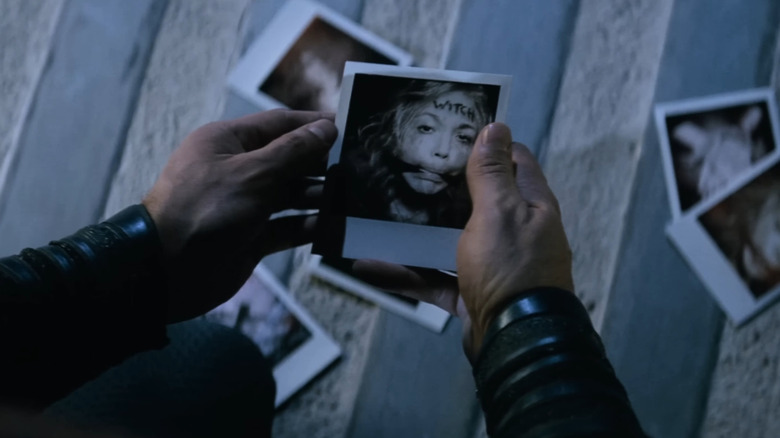
Though Superman's body is invulnerable, his psyche is still made of such vulnerable, human material as hopes, emotions, traumas, and fears. This is exactly what makes the hero so beloved, both by the characters in the pages of his comics and the real people who read them. At the same time, it also means that, in the right (wrong) circumstances, his most human weakness could be his most easily exploitable.
A common attack lodged against Superman's psyche is the threat of harm against someone he loves. Memorably, the entire titular, climactic battle of Zack Snyder's "Batman v Superman: Dawn of Justice" relies on Henry Cavill's Clark Kent succumbing to fairly low-level psychological manipulation. Lex Luthor (Jesse Eisenberg) gets the Man of Steel's attention by dropping Lois Lane (Amy Adams) from a great height, then compels him to fly to Gotham and, potentially, kill Batman (Ben Affleck) to save his mother, Martha (Sally Field).
James Gunn spends much of his own "Superman" film subjecting his protagonist to psychological torment as well, though with a bit more creativity. Nicholas Hoult's Lex Luthor is able to manipulate Clark into anger and eventual surrender by kidnapping his dog, Krypto, isolates him from his friends and the public at large by releasing a controversial tape of his Kryptonian parents, and (in arguably the movie's most tragic moment) attempts to force Clark to reveal secrets about himself by playing Russian roulette with one of Metropolis' citizens (Dinesh Thyagarajan).
Electricity
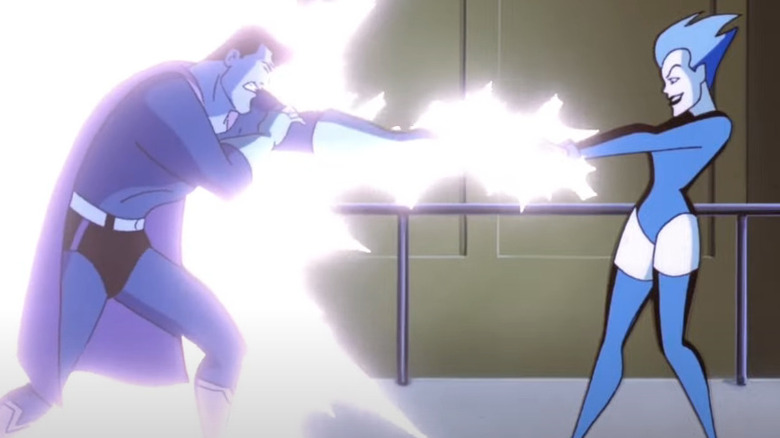
Probably the most surprising weakness that's still seemingly effective against Superman is electricity. In various comics and television shows, multiple enemies have been able to subdue him to the point of incapacitation and capture with a sustained shock of ridiculously high voltage. This is often showcased in conflicts with the supervillain Livewire, who was actually created as a challenging new foe for an episode of "Superman: The Animated Series."
In the eponymous 1997 episode from the 2nd season, Livewire is an unnatural metahuman who gets electric powers from a thunderstorm. As it's depicted, she is essentially able to cause Superman pain through electrocution because, like all living beings, he has an electric current running through him. While it doesn't seem like it could kill him, it does make Livewire such a difficult adversary that Superman has to think outside the box to find ways to protect himself against her powers.
This aspect of the "Superman" mythos was in large part reinforced by the modern "Supergirl" television series, which revived Livewire as a uniquely frustrating enemy even for the titular Kryptonian protagonist (Melissa Benoist). However, in the latter show, Livewire's electric powers seem to have a concussive effect as opposed to an internal, biological one, so it may be argued that this weakness, perhaps more than most, depends upon the rules of a particular continuity.
Super Senses

While Superman is normally subjected to attacks that exploit what few physical vulnerabilities he might have, some particularly imaginative supervillains have been able to exploit those gifts that make him "super" in the first place. As we alluded to multiple times in previous slides, radiation from Earth's yellow sun actually alters Superman's Kryptonian physiology from its natural state, heightening his physical attributes.
When it comes to having superior strength, speed, and durability, there are few, if any, real downsides. But that isn't true for having superior senses, specifically a superior sense of hearing. Like the Vought Supes from the Amazon Prime Video series "The Boys," Kryptonians are uniquely vulnerable to audio assaults because their hearing is better (read: more sensitive) than a human's. Again, this is a weakness commonly exploited as a non-lethal option to deter Superman by Batman, and can be seen in such popular examples as "Batman v Superman," "Justice League: War," and Frank Miller's "The Dark Knight Returns." In a recent comic, he even proved that he has mastered whistling a certain frequency that causes Superman pain.
At the end of the day, however, it is always depicted as a definitively non-lethal and usually non-incapacitating measure. It can slow Superman down and distract him, perhaps enough to enact a second half of a scheme to take him out, but sound won't end him on its own.
Lack Of Training
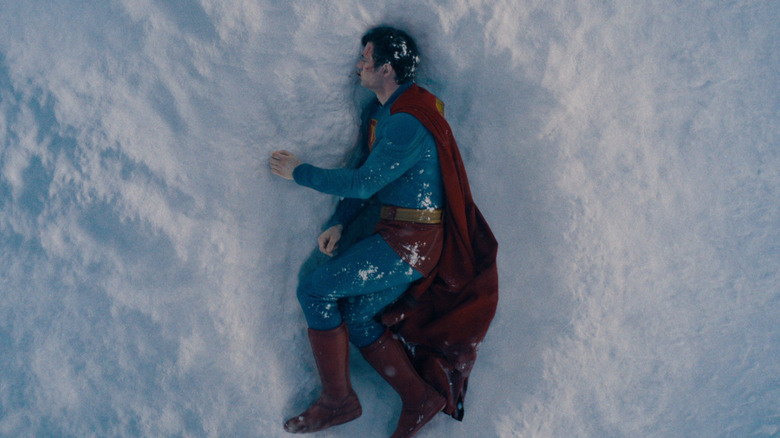
Another ballast against Superman going full god of war with his immense power is that he wasn't raised as a warrior. In every mainstream continuity, he is sent away from Krypton as an infant, and arrives on Earth to be raised by Jonathan and Martha Kent -- two farmers who teach Clark lessons of control, compassion, and inner strength, rather than of self-defense, weapon-wielding, or military strategy.
Because of this, some have credibly wondered if Superman would survive half the fights he's involved in if he didn't constantly outmatch his enemies just in terms of strength, speed, and durability alone. Frequently, he is shown to struggle against other Kryptonians who have the same amount of strength -- particularly General Zod, whose military expertise, extensive combat training, and decades of experience allow him to wipe the floor with the younger Kryptonian in some cases.
This concept was explored subtly in James Gunn's "Superman" through the main supervillain, "Ultraman." Without spoiling the (heavily predicted) twist, Ultraman is a being equally as strong, fast, and durable as Superman himself. But what gives him a seemingly insurmountable edge against the Man of Steel is that Ultraman's boss, Lex Luthor, has developed and trained him in precise countermoves to every punch, kick, or laser-beam Superman could attempt. This gives Ultraman superior fighting ability -- artificially inflated but no less dangerous. And it's pretty telling that Superman isn't able to defeat Ultraman until he finds a way to overcome the gap between their respective fighting abilities.
Drugs

Superman's Kryptonian physiology grants him a healing factor so great that, unless altered by some exterior agent or returned to normal by a red sun, he cannot be affected by drugs. His body simply repairs itself too fast, preventing him from even using recreational drugs to experience a high. This is why the Supergirl of James Gunn's DC Universe -- and the Supergirl of current DC Comics, featured in Tom King and Bilquis Evely's "Supergirl: Woman of Tomorrow" -- needs to travel to red sun planets to get space drunk in space bars.
However, if someone were able to compromise Superman physically, even just marginally so, he could be drugged. Unsurprisingly, the Joker is one of the very few DC villains to find a way to take advantage of this horrifically creative and violating weakness, using it in a scheme so terrible it dwarfs almost anything else he's ever done in terms of cruelty and consequence.
In the "Injustice" universe, Gotham's Clown Prince of Crime distills a special strain of Scarecrow's fear toxin -- laced with enough Kryptonite to weaken Superman's immune system without robbing him of significant power or making him noticeably ill -- and uses it to convince him that he was being attacked by Doomsday. In reality, Superman was hallucinating a pregnant Lois Lane as his most dangerous enemy, and was thus manipulated into killing her. The Joker manages a similar feat in the mainstream DC New 52 continuity as well, developing a version of his Joker venom that could affect Superman while leaving him lethal enough for Batman to deal with (which is exactly where those red knuckles come in handy).
Superhuman Viruses

For the same reasons Superman can't be drugged normally -- and, for that matter, is spared other natural consequences of living, such as aging -- he is also immune to most physical illnesses, or, in some continuities, so resilient to them that he may as well be immune. The exception to this rule is those viruses that are not of this world, and thus don't attack the body in the same way Superman is primed to defend itself against.
For example, in the New 52 DC Comics continuity, Superman is susceptible to the so-called "Doomsday Virus," named after the aforementioned Kryptonian monster whose constantly evolving and adapting powerset has allowed him to be one of a few supervillains who have successfully killed Kal-El. Because Doomsday was engineered by a malevolent Kryptonian scientist to be able to evolve to survive anything, including death, Doomsday's corpse is capable of prolonging his bloodline by emitting spores that transform those in his vicinity. When Superman gets infected during the New 52 storyline "Superman: Doomed," his body begins to morph into a Doomsday-like form, and his mind becomes increasingly feral.
This concept was revived for the post-Rebirth DC Event "Dark Knights: Metal," in which the Batman of Earth-1 kills his Superman using a version of the Doomsday Virus. While this could imply that the Doomsday Virus remains dangerous, it also could be argued that Earth-1 is visually implied to be an offshoot of the New 52 continuity. (It's also worth pointing out here as an aside, given that the virus affects Superman's mental state and the fact that we're discussing illnesses in general, that Superman is likely as vulnerable to mental illness as any average human.)
Atmospheric Limitations

Of all the physical limitations included on this list, environmental effects deserve the most pronounced asterisk. This weakness is unquestionably the most inconsistently employed Superman weakness of all, given that he doesn't even seem to possess it in the slightest in certain mainstream continuities.
In some iterations, Superman's lungs and breathing ability, while stronger than a human's, still need the same conditions to operate. This means that Superman is technically capable of drowning in water or suffocating in space, despite the fact that his body would be able to survive other negative physical effects that could be withstood by his superhuman durability. The TV shows of the DC Animated Universe ("Superman: The Animated Series," "Justice League," et al.) and the more recent "My Adventures with Superman" depict him as needing a specialized breathing apparatus to survive outside Earth's atmosphere. (Incidentally, the Viltrumites of the "Invincible" universe have to hold their breath while in space and need oxygen masks underwater. It isn't that much of a stretch to imagine the two species have been written with similar ideas in mind.)
At the same time, this is absolutely not true of all Supermen. In the comics, Superman regularly flies around space for extended periods of time, and the Superman of Zack Snyder's DC universe was unbothered by leaving Earth's atmosphere. As for James Gunn's DC universe, the jury's still out -- though his Superman is nearly suffocated by the Engineer (María Gabriela de Faría) toward the end of his film.
Mind Control

Speaking of James Gunn's "Superman," the inclusion of Clark Kent's bizarre -- but canonical -- hypno glasses may have had some viewers scratching their heads. If nothing else, it holds a longstanding tradition in DC Comics of almost everyone being susceptible to hypnosis of some kind or another, Superman included.
As we mentioned above, the Joker has been able to use a version of his Joker toxin to control Superman's mind, and one could argue Scarecrow's fear toxin is another form of mind control. The most famous example of this from the comics arguably comes from "Batman: Hush," in which Poison Ivy manages to ensnare Superman as her ultimate hypnotized pet. He's also been controlled by Maxwell Lord, Sean Gunn's character from "Superman" and the upcoming "Peacemaker" season 2.
Darkseid and Brainiac have used even more extra-normal methods to exert their influence on Kal-El, and Kryptonians are usually depicted as being vulnerable to telepathic control as well. Finally, the story "Superman: For the Man Who Has Everything" shows that a certain alien plant can force Superman's mind to conjure an all-consuming delusion fulfilling his greatest desires.
Magic
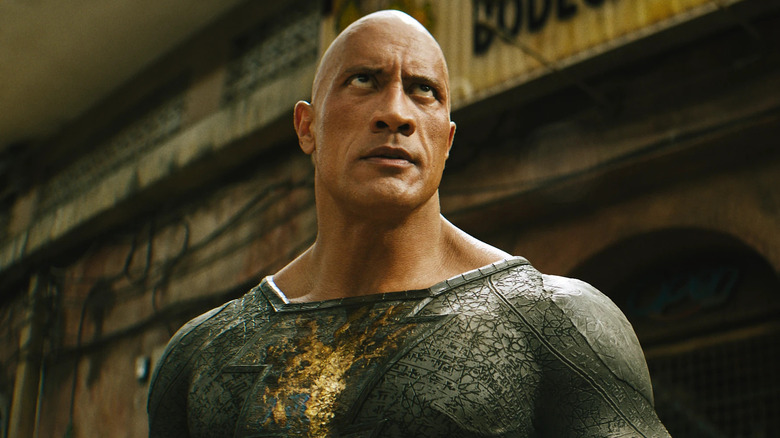
Superman is vulnerable to magic in the same way that Batman is vulnerable to, well, everything. Which is just to say that he isn't uniquely weak against magical attacks; he simply doesn't possess a natural, physical deterrent against them in the same way he does missiles, bullets, lasers, or any other worldly threat.
This lack of resistance has raised questions about who would win in a fight between Superman and Black Adam -- a question that seemingly drove Dwayne Johnson to spend over a decade making his ill-fated "Black Adam" movie. In the comics, the villain (and occasional antihero, in recent years especially) holds the powers of six ancient Egyptian gods, which, among other things, grant him physical capabilities potentially on par with Superman. Some have argued that, given the feats Superman has accomplished over his decades upon decades of issues, the Man of Steel would be the clear winner in a contest of physical strength alone. But against a being close to his power level, who also wields the magical lightning of literal gods? It's a premise almost compelling enough to gamble an entire movie on.
Radiation
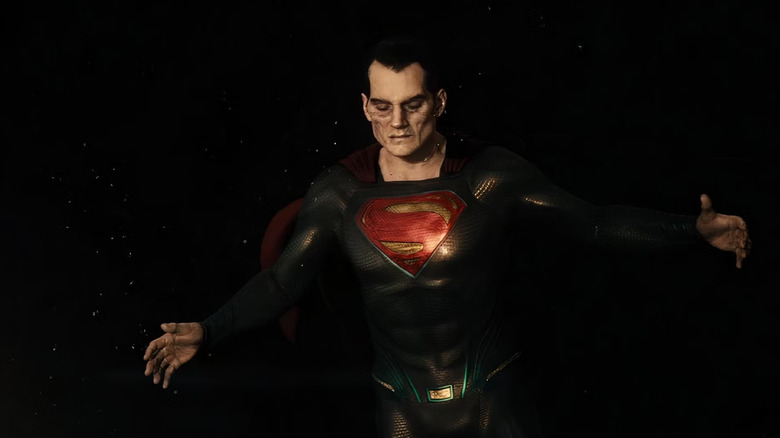
In "Batman v Superman: Dawn of Justice," Zack Snyder boldly depicts Superman getting directly nuked by the U.S. government. Though he survives, he's visibly weakened and needs to absorb sunlight to restore his body back to full strength. Like many visual and narrative elements of the film, this was almost certainly taken from "The Dark Knight Returns," in which an intercepted nuke renders Superman almost skeletal.
But could enough radiation actually kill Superman? Potentially! In the universe of Grant Morrison and Frank Quitely's "All-Star Superman" (a limited Elseworld comic book that helped inspire James Gunn's "Superman"), the titular character absorbs so much solar radiation that, though ridiculously overpowered for a relatively brief time, he is destined to succumb to cellular decay. In using one of Superman's weaknesses in such an extreme way, however, Morrison mines novel and profound meaning in the character, sending him into the sunset (emphasis on the "sun") more human than ever. In the same way, Gunn's "weaker" Man of Steel is uniquely strong in his own humanity, which is precisely why "Superman" is the movie we need right now.
If you're looking for the easiest way to keep up with all the major movie and TV news, why not sign up to our free newsletter?
Read the original article on SlashFilm.











